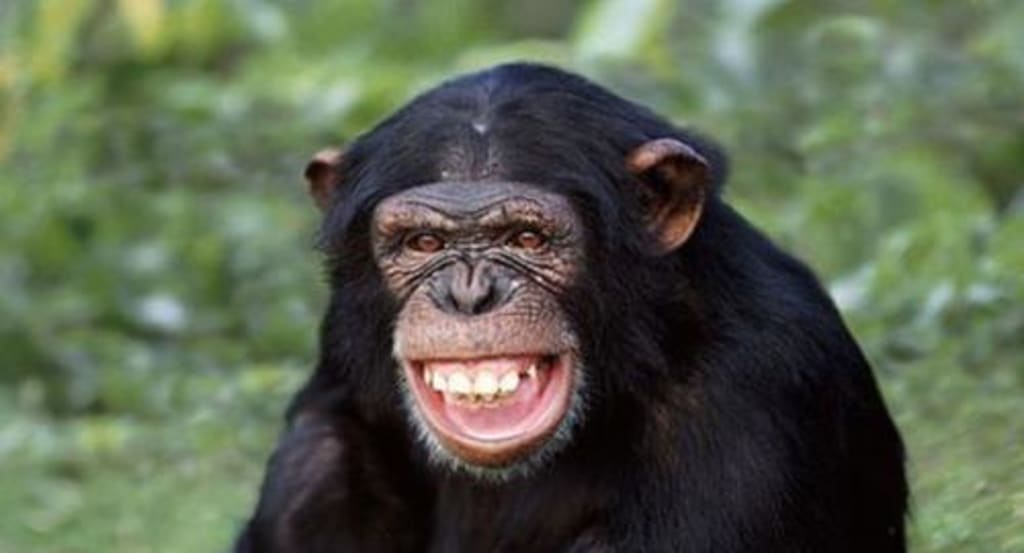A psychological scientist once raised chimpanzees with his own children. What happened to them later?
A psychological scientist once raised chimpanzees with his own children. What happened to them later?

In nature, many animals began to slowly change in order to adapt to the environment. For example, giraffes began to grow their necks in order to be able to eat leaves higher on the tree. Some animals were obviously not good at swimming in the early days, but in order to avoid being caught, they gradually evolved into aquatic creatures.
We who were born as human beings are no exception. As the highest creatures in nature, the origin of human beings has always been an issue that humans have been studying. From Darwin's theory of evolution, human beings evolved from apes, which is now gorillas. In the process of evolution, humans have also "thrown away" some useless things, such as the tail of the coccyx, because with the evolution gradually disappear.
In theory, humans and modern chimpanzees belong to the same ancestor, but humans have evolved and they have not. In order to compare what is the difference between humans and chimpanzees, an American psychologist Kellogg made a bold experiment in 1931, he put a 7-month-old female chimpanzee in his home, with his own Raised with a 10 month old baby.
The experiment was originally planned for 5 years, but the psychologist stopped the experiment early after only 9 months of recording. Later, the chimpanzees were put into the zoo, and psychologist Kellogg also published a book called The book "Apes and Children" explains in detail the experiment and the status of the chimpanzees that were re-stocked in the zoo.
01. The experiment begins
Psychologist Kellogg originally studied vision and hearing.
However, in 1931, he had an idea one day to study the differences between humans and chimpanzees. He did what he said. In order to obtain more detailed experimental data, he set the experimental plan for 5 years and began to identify goals.
First of all, he found a 7-month-old female chimpanzee named Guya, and then he needed a human baby. He believed that no parent would want to let his child participate in this abnormal experiment. For this reason, Kellogg was once caught up in Experimental bottleneck period.
In order to carry out the experiment, he had to use his 10-month-old son, Donald, as a human infant, a decision that was not opposed by his wife, a psychologist, who had the same goal. , all want this experiment to see a noticeable improvement.
In this way, their 10-month-old son and the chimpanzee became "brothers and sisters", and the two shared food and drink together, enjoying the same care from Kellogg. Over time, the 10-month-old baby and the 7-month-old chimpanzee got along more and more wonderfully, and their characteristics changed dramatically.
02. Significant effect
In order to ensure the fairness of the experiment, psychologist Kellogg created the same living environment for his children and chimpanzees, and will record their growth process in detail at regular intervals.
These "brothers and sisters" live the same life every day. Because of their confidence in humans, many people did not see the results of the experiment and felt that Donald as a human would definitely be better than Guya as a chimpanzee in all aspects. But the actual results were just the opposite. In the first few months of the experiment, there was a huge difference between the chimpanzees and the babies.
First of all, the physical development and senses of chimpanzees are far more than those of Donald, showing huge advantages. Chimpanzees will be more accurate in using tools, and their crawling movements will gradually become more humanized, and they will no longer use limbs to walk.
On the other hand, the psychologist's son Donald did not perform as well. When he was hungry, he would not cry to attract the attention of his parents. Crawling around like a gorilla, as if the habits of Guya and Donald were completely replaced.
What is even more worrying is that chimpanzees may become smarter and smarter with this level of learning. At one year old, it is completely larger than an adult, and its wildness has not been completely eliminated. If it continues to be raised, it may become There is an attack on humans.
To this end, psychologists made a helpless decision.
03. Terminate the experiment early
Kellogg's helpless decision was to terminate the experiment early at 9 months. The result is obvious. If the experiment continues, the consequences will be quite serious. Guya, the chimpanzee, has long been behaving like a human.
In its consciousness, he is not a gorilla but a human. On the other hand, Donald has learned a lot of gorilla habits. He no longer likes to use human thinking to think about problems. He has a bit of wildness in his body, and likes to bite each other when he meets people. , this series of adverse effects continues.
In order for both parties to get back on track, the experiment had to be terminated, or else it would have a huge impact on the growth of both Donald and the chimps.
04. Chimpanzees and Donald
After the experiment, Donald really stopped biting people, and his intelligence began to return to normal, enjoying the same early childhood education as normal human children. The chimpanzees were returned to the zoo's chimpanzee group to live with the chimpanzees.
It is a pity that Guya has long been assimilated by humans in this experiment, and it has always thought of itself as a human in its consciousness. It does not understand why the "parents" abandoned him, so in the chimpanzee group, Guya has always been with this group of normal people. Chimpanzees are difficult to integrate.
A year later, Gu Ya, who was only three years old, died of illness. It is worth noting that the normal life span of chimpanzees is the same as that of humans, up to about 60 years old, and Gu Ya seems to be a dead child who just saw this world and left. .
In fact, it was not all smooth sailing for Donald. He committed suicide after the death of his parents. Maybe it was related to the original chimpanzee experiment, and maybe it was also his own reason, but in any case, this experiment ended in a tragedy, and the experimental subjects also ushered in the worst. ending.
05. Summary
Although the experiment did not last for 5 years, 9 months was enough for psychologist Kellogg to gain a lot. He sorted out the data and published a book called "Apes and Children", which became popular once sold. the entire medical community.
He received a grant from the attention of the medical community. He lived up to expectations. He studied the sound of dolphins and helped sonar. A psychologist who has made great contributions to the scientific community, his project Going beyond ethical experiments is indeed unacceptable, for which Kellogg has been condemned by many people.
But without the experiments of psychologists like Kellogg, there is no way for humans to know how chimpanzees differ from humans, and science will never progress.
About the Creator
dardani lennon
The question mark is the key to any science
Enjoyed the story? Support the Creator.
Subscribe for free to receive all their stories in your feed. You could also pledge your support or give them a one-off tip, letting them know you appreciate their work.






Comments
There are no comments for this story
Be the first to respond and start the conversation.